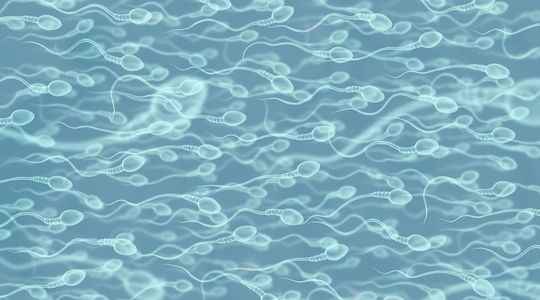An unpublished work of synthesis on the drop in the concentration of spermatozoa in humans in the world was published this Tuesday, November 15 in the reference journal Human Reproduction Update. By bringing together hundreds of published studies on the subject and data covering the period 1973-2018 available in more than fifty countries, the authors were able to conclude that the average concentration of gametes in the sperm of the general male population was passed from 101 to 49 million per milliliter in forty-five years. This finding partly explains the decline in fertility worldwide.
In France, nearly 3.3 million people are directly affected by an infertility problem. And the phenomenon has been increasing for twenty years according to Professor Jean-Marc Ayoubi, head of the obstetrics gynecology and reproductive medicine department at the Foch hospital in Suresnes. For the latter, if the health authorities do not take the problem head on today, the repercussions on the world population could become worrying in a few decades.
L’Express: How does this study differ from what has already been published on the subject?
Jean-Marc Ayoubi: The strength of this publication is the amount of studies that have been analyzed, it is enormous. It shows that the whole world is affected, from Australia to China, via Europe… At one time, it was thought that only developed countries were affected. However, developing countries, such as India and the Middle Kingdom, are also. It is a strong demonstration of the drop in the quantity of spermatozoa, especially vis-à-vis those who did not believe in it, like climate skeptics with climate change.
Some indeed thought that the improvement of the technical tools gave us different values compared to before. However, the interest of this study is that it refutes this argument by the extent of the data analyzed. The conclusion is clear: fertility is declining. It shows that the average concentration of gametes in the sperm has been halved, which inevitably has an impact on the birth rate. After all, quantity is one thing, but quality is another. If you have tens of millions of sperm per milliliter but they are malformed due to air pollution or abnormal due to smoking, they will not be fertile.
Precisely, how to explain this decline in male fertility?
The study in question talks about the quality and quantity of sperm in a spermogram. But when we look further, fertility declines because of the decline in male and female fertility. Some causes are common. Spermatogenesis, the formation of spermatozoa, and folliculogenesis, the formation of a mature oocyte which will be fertilized, are quite similar processes. The causes which disturb one, disturb the other. We know very well, for example, that smoking affects both male and female fertility.
I was part of the commission commissioned by the Ministry of Health to make proposals for a national fertility plan led by Professor Samir Hamamah [NDLR : le rapport sur les causes de l’infertilité, commandé dans le cadre des lois de bioéthique de 2021, a été remis au ministère fin février]. However, we were already raising fertility problems related to environmental causes, atmospheric pollution, pesticides or even products derived from certain drugs. With one observation: the decline in male and female fertility leads to an overall decrease in births and a dramatic decline in developed countries but also in underdeveloped countries.
Could this decline become a danger, in the medium or long term, for the future of humanity?
Today, it is difficult to talk about that. But yes, in the long term, it can become a danger for the future of humanity. Not in ten or twenty years but certainly within a century if we do nothing about endocrine disruptors and pollutants that alter the spermogram and female fertility. The review study Human Reproduction Update takes up publications that have already appeared, alarm bells have been ringing for several years. This drop in fertility will result in a drop in the birth rate and therefore in the world population. We know very well that in 2050 or 2100 the Chinese will no longer be 1.4 billion but rather 700 million.
Just look at the number of couples consulting for infertility, it’s constantly increasing, even in France. At the national level, the increase in consultations for infertility is continuous. We have gone from 1 couple in 7 or 8 to 1 couple in 5 or 6 in twenty-five years. However, the decline in the birth rate may involve other factors. It can be linked to societal causes. For example, couples no longer want five children because, economically, it’s complicated. On the other hand, the number of people who consult for infertility is not linked to societal causes, but to medical, environmental, genetic, atmospheric causes, etc.
What can we do today to stop the phenomenon?
We must already advance research. Especially in France, it is not yet sufficiently developed compared to the United States, Belgium, the Netherlands or even Great Britain. The better we understand the mechanisms having an impact on fertility through extensive basic research, the better we can cope with this decline in fertility. Of course, we already know some things. For example, before taking drugs to increase fertility, you must stop smoking.
Then, in addition to understanding the phenomenon, there is the informational aspect, vis-à-vis patients and health professionals alike. Today, we know that female fertility declines from the age of 32-33. Women must be informed that this begins well before 40 years. However, thanks to the modification of the bioethics law, women who prefer to have a late birth plan have been allowed to freeze their oocytes and achieve what is called “preservation of fertility”. The publication of the journal Human Reproduction Update reinforces this sense of urgency in the face of the phenomenon of infertility. We have a few decades ahead of us to turn the tide.
